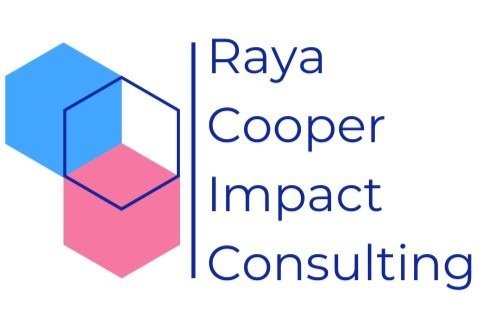Navigating shifting sands in Corporate Social Impact
Photo by Julius Yls on Unsplash
In the past year, there have been significant changes in how companies approach Corporate Social Impact (CSI), and these changes will likely continue in 2024 and beyond. At the top of the list are shifts in how companies view their CSI initiatives. In the past, CSI was seen by many companies as a philanthropic effort to create positive perception for the company. A chance to give back. They were considered nice-to-have programs but not seen as strategic tools — they had limited influence on the company’s core operations. However, this old paradigm is evolving. Companies are bringing their CSI and ESG teams closer to core functions through mergers, reorganizations, and changes in priorities. And with the increasing ESG regulations and rising stakeholder pressures, companies are paying closer attention to their impact initiatives.
“51% of Corporate Social Impact professionals report increased exposure of CSR to the C-Suite”
With this increased attention comes new risks to CSI teams, as they are less likely to be treated as special projects and are increasingly asked to perform as strategically aligned programs, and to demonstrate their performance in ways more similar to traditional business units.
Getting closer to the business has pros and cons. It brings more attention but also more scrutiny and pressure. More attention can mean more resources and brand assets. Corporate mergers can remove restrictions and allow new partnerships, i.e. corporate marketing and communications may now contribute to working groups and provide more resources for things like impact reporting and media moments. But companies are also starting to test if and how Corporate Social Impact (CSI) can be a company investment — not just to give back to society, but to improve conditions for the company as well.
CSI teams are being required (many for the first time) to demonstrate their value proposition to the business, and to do so in ways they haven’t done before. With this increased attention comes new risks to CSI teams, as they are less likely to be treated as special projects and are increasingly asked to perform as strategically aligned programs, and to demonstrate their performance in ways more similar to traditional business units.
So what can a CSI leader do to navigate this shift?
Use your Materiality Assessment to link Social Impact and Business goals.
Your Materiality Assessment can illuminate crucial threads that link corporate social impact and key business priorities, and help you develop clear and concise messages about why this matters. By understanding which parts of your portfolio matter most to your stakeholders, both internal and external, you can focus on what to emphasize and what to adjust in order to align with business goals. For example, if your company is looking to enter a particular target market, how might Social Impact efforts contribute to these goals?
Gather allies and stakeholders around joint impact and business objectives.
Now that you have your plan (see recommendation above), find your cross-functional allies and stakeholders, ideally with a solid representation of company leadership. Gather this group together with a common purpose that aligns the business objectives and social impact goals. If your company is targeting new markets, consider including representations from sales and business operations — think beyond the traditional alliances. Make it clear that social impact is not separate from the business, but an essential part of it. Social impact relies on support and investment from the company, but it can also bring significant benefits to the business that haven't been fully explored yet.
Use KPIs to demonstrate value and build partnerships.
This might be the trickiest step. You’ve figured out what matters to the business and how your CSI portfolio connects. You’ve brought together your allies and stakeholders, but you still will likely need to demonstrate the value of your social impact program to the business during a quarterly business review.
According to CECP, 47% of member companies measure the business value of community investments through employee metrics, (think: employee recruitment, retention and engagement) and 42% of members measure their business value through metrics that assess brand or customers such (i.e. marketing data and trust/reputation) (CECP: Giving in Numbers, 2023). Measuring business value of social impact is tricky, even for seasoned philanthropy professionals — the connection may be tenuous, you may not have the right data points, and this is a new way of thinking. Not to mention the larger question of “is this even the right thing to do?”
But in this challenge, there is opportunity to lean on allies and business partners and bring them in to the impact conversation. This accomplishes two things - by allowing their expertise and perspective to inform your approach, you can create KPIs that are realistic, that will matter to the business and to your work. And you have the chance to cultivate new partnerships and collaborations.
Don’t lose your voice – make it louder
All this being said, one of the risks of these shifts is that social impact teams may lose sight of their raison d e’tre in favor of business priorities. CSI professionals may worry that the business will devalue CSI goals, which are to improve conditions for people and planet. In truth, it is a dance and the goal is balance – that is what makes CSI different from traditional philanthropy. But as CSI teams build their relationships and story with the company at large, there will be new opportunities to amplify the message, and gain new audiences. Don’t lose your voice - use this moment to make it louder.
Need support demonstrating the business value of your social impact program? Looking for thought partnership as you find the right metrics or messaging? We’re here to help!
Sources:
ACCP (2023) 4th Annual CSR Insights Survey - https://accp.org/resources/csr-resources/4th-annual-csr-insights-survey/
CECP (2023) Giving in Numbers, 2023 - https://cecp.co/wp-content/uploads/2023/12/GIN2023_FINAL3.pdf


